- Home
- Neal Stephenson
Some Remarks: Essays and Other Writing Page 19
Some Remarks: Essays and Other Writing Read online
Page 19
When a trawler snags a cable, it will pull it up off the seafloor. How far it gets pulled depends on the weight of the cable, the amount of slack, and the size and horsepower of the ship. Even if the cable is not pulled all the way to the surface, it may get kinked—its minimum bending radius may be violated. If the trawler does succeed in hauling the cable all the way up out of the water, the only way out of the situation, or at least the simplest, is to cut the cable. Dave Handley once did a study of a cable that had been suddenly and mysteriously severed. Hauling up the cut end, he discovered that someone had sliced through it with a cutting torch.
There is also the obvious threat of sabotage by a hostile government, but, surprisingly, this almost never happens. When cypherpunk Doug Barnes was researching his Caribbean project, he spent some time looking into this, because it was exactly the kind of threat he was worried about in the case of a data haven. Somewhat to his own surprise and relief, he concluded that it simply wasn’t going to happen. “Cutting a submarine cable,” Barnes says, “is like starting a nuclear war. It’s easy to do, the results are devastating, and as soon as one country does it, all of the others will retaliate.”
Bert Porter, a Cable & Wireless cable-laying veteran who is now a freelancer, was beachmaster for the Tong Fuk lay. He was on a ship that laid a cable from Hong Kong to Singapore during the late 1960s. Along the way they passed south of Lan Tao Island, and so the view from Tong Fuk Beach is a trip down memory lane for him. “The repeater spacing was about 18 miles,” he says, “and so the first repeater went into the water right out there. Then, a few days later, the cable suddenly tested broken.” In other words, the shore station in Hong Kong had lost contact with the equipment on board Porter’s cable ship. In such cases it’s easy to figure out roughly where the break occurred—by measuring the resistance in the cable’s conductors—and they knew it had to be somewhere in the vicinity of the first repeater. “So we backtracked, pulling up cable, and when we got right out there,” he waves his hand out over the bay, “we discovered that the repeater had simply been chopped out.” He holds his hands up parallel, like twin blades. “Apparently the Chinese were curious about our repeaters, so they thought they’d come out and get one.”
As the capacity of optical fibers climbs, so does the economic damage caused when the cable is severed. FLAG makes its money by selling capacity to long-distance carriers, who turn around and resell it to end users at rates that are increasingly determined by what the market will bear. If FLAG gets chopped, no calls get through. The carriers’ phone calls get routed to FLAG’s competitors (other cables or satellites), and FLAG loses the revenue represented by those calls until the cable is repaired. The amount of revenue it loses is a function of how many calls the cable is physically capable of carrying, how close to capacity the cable is running, and what prices the market will bear for calls on the broken cable segment. In other words, a break between Dubai and Bombay might cost FLAG more in revenue loss than a break between Korea and Japan if calls between Dubai and Bombay cost more.
The rule of thumb for calculating revenue loss works like this: for every penny per minute that the long distance market will bear on a particular route, the loss of revenue, should FLAG be severed on that route, is about $3,000 a minute. So if calls on that route are a dime a minute, the damage is $30,000 a minute, and if calls are a dollar a minute, the damage is almost a third of a million dollars for every minute the cable is down. Upcoming advances in fiber bandwidth may push this figure, for some cables, past the million-dollar-a-minute mark.
Clearly, submarine cable repair is a good business to be in. Cable repair ships are standing by in ports all over the world, on 24-hour call, waiting for a break to happen somewhere in their neighborhood. They are called agreement ships. Sometimes, when nothing else is going on, they will go out and pull up old abandoned cables. The stated reason for this is that the old cables present a hazard to other ships. However, if you do so much as raise an eyebrow at this explanation, any cable man will be happy to tell you the real reason: whenever a fisherman snags his net on anything—a rock, a wreck, or even a figment of his imagination—he will go out and sue whatever company happens to have a cable in that general vicinity. The cable companies are waiting eagerly for the day when a fisherman goes into court claiming to have snagged his nets on a cable, only to be informed that the cable was pulled up by an agreement ship years before.
IN WHICH THE HACKER TOURIST DELIGHTS IN CAIRO, THE MOTHER OF THE WORLD. ALEXANDRIA, THE FORMER HACKER HEADQUARTERS OF THE PLANET. THE LIGHTHOUSE, THE LIBRARIES, AND OTHER HAUNTS OF ANCIENT NERDS AND GEEKS. PROFOUND SIGNIFICANCE OF INTERSECTIONS. TRAVELS ON THE DESERT ROAD. LIBYA’S CONTACT WITH THE OUTSIDE WORLD RUDELY SEVERED—THEN RESTORED! ENGINEER MUSALAMAND HIS PLANETARY INFORMATION NEXUS. THE VITALLY IMPORTANT CONCEPT OF SLACK.
31˚ 12.841' N, 29˚ 53.169' E Site of the Pharos Lighthouse, Alexandria, Egypt
Having stood on the beach of Miura watching those miserable-but-plucky Japanese surfers, the hacker tourist had reached FLAG’s easternmost extreme, and there was nothing to do except turn around and head west. Next stop: Egypt.
No visit to Egypt is complete without a stop in Cairo, but that city, the pinnacle of every normal tourist’s traveling career, is strangely empty from a hacker tourist point of view. Its prime attraction, of course, is the pyramids. We visited them at five in the morning during a long and ultimately futile wait for the Egyptian military to give us permission to rendezvous with FLAG’s cable-laying ship in the Gulf of Suez. To the hacker, the most interesting thing about the pyramids is their business plan, which is the simplest and most effective ever devised:
1. Put a rock on top of another rock.
2. Repeat (1) until gawkers arrive.
3. Separate them from their valuables by all conceivable means.
By contrast, normal tourist guidebooks have nothing good to say about Alexandria; it’s as if the writers got so tired of marveling at Cairo and Upper Egypt that they had to vent their spleen somewhere. Though a town was here in ancient times, Alexandria per se was founded in 332 BC by Alexander the Great, which makes it a brand-new city by Egyptian standards. There is almost no really old stuff in Alexandria at all, but the mere memory of the landmarks that were here in its heyday suffice to make it much more important than Cairo from the weirdly distorted viewpoint of the hacker tourist. These landmarks are, or were, the lighthouse and the libraries.
The lighthouse was built on the nearby island of Pharos. Neither the building nor even the island exists any more. Pharos was eventually joined to the mainland by a causeway, which fattened out into a peninsula and became a minuscule bump on the scalp of Africa. The lighthouse was an immense structure, at some 120 meters the tallest building in the world for many centuries, and contained as many as 300 rooms. Somewhere in its upper stories a fire burned all night long, and its light was reflected out across the Mediterranean by some kind of rotating mirror or prism. This was a fine bit of ancient hacking in and of itself, but according to legend, the optics also had magnifying properties, so that observers peering through it during the daytime could see ships too distant to be perceived by the naked eye.
According to legend, this feature made Alexandria immune to naval assault as long as the lighthouse remained standing. According to another yarn, a Byzantine emperor spread a rumor that the treasure of Alexander the Great had been hidden within the lighthouse’s foundation, and the unbelievably fatuous local caliph tore up the works looking for it, putting Pharos out of commission and leading to a military defeat by the Byzantine Empire.
Some combination or other of gullible caliphs, poor maintenance, and earthquakes eventually did fell the lighthouse. Evidently it toppled right into the Mediterranean. The bottom of the sea directly before its foundations is still littered with priceless artifacts, which are being catalogued and hauled out by French archaeologists using differential GPS to plot their findings. They work in the shadow of a nondescript fortress built on the site
by a later sultan, Qait Bey, who pragmatically used a few chunks of lighthouse granite to beef up the walls—just another splinter under the fingernails of the historical preservation crowd.
You can go to the fortress of Qait Bey now and stare out over the ocean and get much the same view that the builders of the lighthouse enjoyed. They must have been able to see all kinds of weirdness coming over the horizon from Europe and western Asia. The Mediterranean may look small on a world map, but from Pharos its horizon seems just as infinite as the Pacific seen from Miura. Back then, knowing how much of the human world was around the Mediterranean, the horizon must have seemed that much more vast, threatening, and exciting to the Alexandrians.
Building the lighthouse with its magic lens was a way of enhancing the city’s natural capability for looking to the north, which made it into a world capital for many centuries. It’s when a society plunders its ability to look over the horizon and into the future in order to get short-term gain—sometimes illusory gain—that it begins a long slide nearly impossible to reverse.
The collapse of the lighthouse must have been astonishing, like watching the World Trade Center fall over. But it took only a few seconds, and if you were looking the other way when it happened, you might have missed it entirely—you’d see nothing but blue breakers rolling in from the Mediterranean, hiding a field of ruins, quickly forgotten.
31˚ 11.738' N, 29˚ 54.108' E Intersection of El Horreya and El Nabi Daniel, Alexandria, Egypt
Alexandria is most famous for having been the site of the ancient library. This was actually two or more different libraries. The first one dates back to the city’s early Ptolemaic rulers, who were Macedonians, not Egyptians. It was modeled after the Lyceum of Aristotle, who, between other gigs, tutored Alexander the Great. Back in the days when people moved to information, instead of vice versa, this library attracted most of the most famous smart people in the world: the ultimate hacker, Archimedes; the father of geometry, Euclid; Eratosthenes, who was the first person to calculate the circumference of the earth, by looking at the way the sun shone down wells at Alexandria and Aswan. He also ran the library for a while and took the job seriously enough that when he started to go blind in his old age, he starved himself to death. In any event, this library was burned out by the Romans when they were adding Egypt to their empire. Or maybe it wasn’t. It’s inherently difficult to get reliable information about an event that consisted of the destruction of all recorded information.
The second library was called the Library of Cleopatra and was built around a couple of hundred thousand manuscripts that were given to her by Marc Antony in what was either a magnificent gesture of romantic love or a shrewd political maneuver. Marc Antony suffered from what we would today call “poor impulse control,” so the former explanation is more likely. This library was wiped out by Christians in AD 391. Depending on which version of events you read, its life span may have overlapped with that of the first library for a few years, a few decades, or not at all.
Whether or not the two libraries ever existed at the same time, the fact remains that between about 300 BC and AD 400, Alexandria was by far the world capital of high-quality information. It must have had much in common with the MIT campus or Stanford in Palo Alto of more recent times: lots of hairy smart guys converging from all over the world to tinker with the lighthouse or to engage in pursuits that must have been totally incomprehensible to the locals, such as staring down wells at high noon and raving about the diameter of the earth.
The main reason that writers of tourist guidebooks are so cheesed off at Alexandria is that no vestige of the first library remains—not even a plaque stating “The Library of Alexandria was here.” If you want to visit the site, you have to do a bit of straightforward detective work. Ancient Alexandria was laid out on a neat, regular grid pattern—just the kind of thing you would expect of a place populated by people like Euclid. The main east-west street was called the Canopic Way, and the main north-south street, running from the waterfront toward the Sahara Desert, was called the Street of the Soma. The library is thought to have stood just south of their intersection.
Though no buildings of that era remain, the streets still do, and so does their intersection. Currently, the Canopic Way is called El Horreya Avenue, and the Soma is called El Nabi Daniel Street, though if you don’t hurry, they may be called something else when you arrive.
We stayed at the Cecil Hotel, where Nabi Daniel hits the waterfront. The Cecil is one of those British imperial-era hotels fraught with romance and history, sort of like the entire J. Peterman catalog rolled into one building. British Intelligence was headquartered there during the war, and there the Battle of El Alamein was planned.
Living as they do, however, in a country choked with old stuff, the Egyptians have adopted a philosophy toward architecture that is best summed up by the phrase: “What have you done for me lately?” From this point of view, the Cecil is just another old building, and it’s not even particularly old. As if to emphasize this, the side of the hotel where we stayed was covered with a rude scaffolding (sticks lashed together with hemp) aswarm with workers armed with sledgehammers, crowbars, chisels, and the like, who spent all day, every day, bellowing cheerfully at each other (demolition workers are the jolliest men in every country), bashing huge chunks of masonry off the top floor and simply dropping them—occasionally crushing an air conditioner on some guest’s balcony. It was a useful reminder that Egyptians feel no great compulsion to tailor their cities to the specifications of guidebook writers.
This fact can be further driven home by walking south on Nabi Daniel and looking for the site of the Library of Alexandria. It is now occupied by office buildings probably not more than 100, nor less than 50, years old. Their openings are covered with roll-up steel doors, and their walls decorated with faded signs. One of them advertises courses in DOS, Lotus, dBase, COBOL, and others. Not far away is a movie theater showing Forbidden Arsenal: In the Line of Duty 6, starring Cynthia Khan.
The largest and nicest building in the area is used by an insurance company and surrounded by an iron fence. The narrow sidewalk out front is blocked by a few street vendors who have set up their wares in such a way as to force pedestrians out into the street. One of them is selling pictures of adorable kittens tangled up in yarn, and another is peddling used books. This is the closest thing to a library that remains here, so I spent a while examining his wares: a promising volume called Bit by Bit turned out to be an English primer. There were quite a few medical textbooks, as if a doctor had just passed away, and Agatha Christie and Mickey Mouse books presumably left behind by tourists. The closest thing I saw to a classic was a worn-out copy of Oliver Twist.
31˚ 10.916' N 29˚ 53.784' E Pompey’s Pillar
The site of Cleopatra’s library, precisely 1 mile away by my GPS, is viewed with cautious approval by guidebook writers because it is an actual ruin with a wall around it, a ticket booth, old stuff, and guides. It is right next to an active Muslim cemetery, so it is difficult to reach the place without excusing your way past crowds of women in voluminous black garments, wailing and sobbing heartrendingly, which all goes to make the Western tourist feel like even more of a penis than usual.
The site used to be the city’s acropolis. It is a rounded hill of extremely modest altitude with a huge granite pillar on the top. To quote Shelley’s “Ozymandias”: “Nothing beside remains.” A few sphinxes are scattered around the place, but they were obviously dragged in to give tourists something to look at. Several brutally impoverished gray concrete apartment buildings loom up on the other side of the wall, festooned with washing, crammed with children who entertain themselves by raining catcalls down upon the few tourists who straggle out this far. The granite pillar honors the Roman emperor Diocletian, who was a very bad emperor, a major Christian-killer, but who gave Alexandria a big tax break. The citizenry, apparently just as dimwitted as modern-day Americans, decided that he was a great guy and erected this pillar. Originally the
re was a statue of Diocletian himself on the top, riding a horse, which is why the Egyptians call it, in Arabic, The man on horseback. The statue is gone now, which makes this a completely mystifying name. Westerners call it Pompey’s Pillar because that’s the moniker the clueless Crusaders slapped on it; of course, it has absolutely nothing to do with Pompey.
The hacker tourist does not bother with the pillar but rather with what is underneath it: a network of artificial caves, carved into the sandstone, resembling nothing so much as a D & D player’s first dungeon. Because it’s a hill and this is Egypt, the caverns are nice and dry and (with a little baksheesh in the right hands) can be well lit too—electrical conduit has been run in and light fixtures bolted to the ceiling. The walls of these caves have niches that are just the right size and shape to contain piles of scrolls, so this is thought to be the site of the Library of Cleopatra. This complex was called the Sarapeum, or Temple of Sarapis, who was a conflation of Osiris and Apis admired by the locals and loathed by monotheists, which explains why the whole complex was sacked and burned by Christians in 391.
It is all rather discouraging, when you use your imagination (which you must do constantly in Alexandria) and think of the brilliance that was here for a while. As convenient as it is for information to come to us, libraries do have a valuable side effect: they force all of the smart people to come together in one place where they can interact with one another. When the information goes up in flames, those people go their separate ways. The synergy that joined them—that created the lighthouse, for example—dies. The world loses something.
So the second library is some holes in a wall, and the first is an intersection. Holes and intersections are both absences, empty places, disappointing to tourists of both the regular and the hacker variety. But one can argue that the intersection’s continued presence is arguably more interesting than some old pile that has been walled off and embalmed by a historical society. How can an intersection remain in one place for 2,500 years? Simply, both the roads that run through it must remain open and active. The intersection will cease to exist if sand drifts across it because it’s never used, or if someone puts up a building there. In Egypt, where yesterday’s wonders of the world are today’s building materials, nothing is more obvious than that people have been avidly putting up buildings everywhere they possibly can for 5,000 years, so it is remarkable that no such thing has happened here. It means that every time some opportunist has gone out and tried to dig up the street or to start putting up a wall, he has been flattened by traffic, arrested by cops, chased away by outraged donkey-cart drivers, or otherwise put out of action. The existence of this intersection is proof that a certain pattern of human activity has endured in this exact place for 2,500 years.

 Zodiac: The Eco-Thriller
Zodiac: The Eco-Thriller The Mongoliad: Book One
The Mongoliad: Book One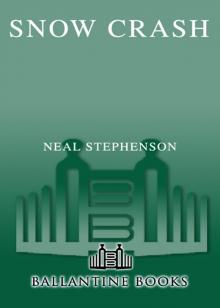 Snow Crash
Snow Crash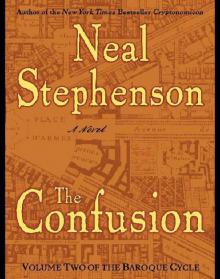 The Confusion: Volume Two of the Baroque Cycle
The Confusion: Volume Two of the Baroque Cycle The Rise and Fall of D.O.D.O.
The Rise and Fall of D.O.D.O. The Diamond Age: Or, a Young Lady's Illustrated Primer
The Diamond Age: Or, a Young Lady's Illustrated Primer The Big U
The Big U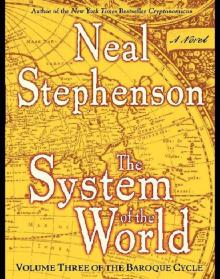 The System of the World: Volume Three of the Baroque Cycle
The System of the World: Volume Three of the Baroque Cycle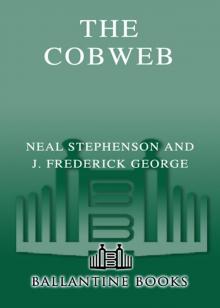 The Cobweb
The Cobweb Reamde
Reamde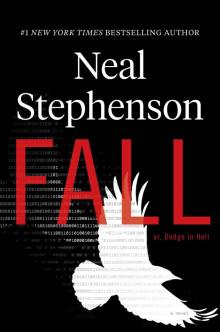 Fall; or, Dodge in Hell
Fall; or, Dodge in Hell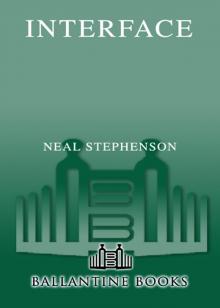 Interface
Interface Quicksilver
Quicksilver The Mongoliad: Book Three
The Mongoliad: Book Three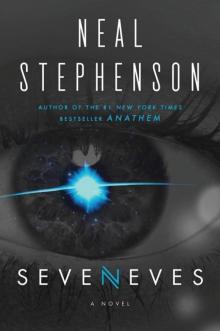 Seveneves
Seveneves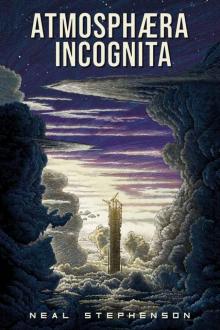 Atmosphæra Incognita
Atmosphæra Incognita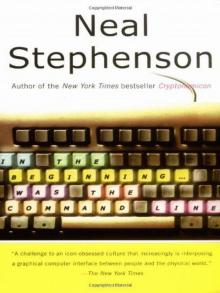 In the Beginning...Was the Command Line
In the Beginning...Was the Command Line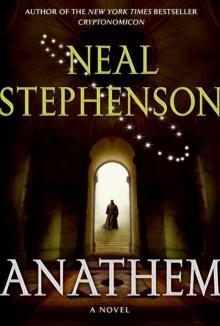 Anathem
Anathem The Rise and Fall of D.O.D.O.: A Novel
The Rise and Fall of D.O.D.O.: A Novel The Mongoliad: Book Two
The Mongoliad: Book Two Diamond Age or a Young Lady's Illustrated Primer
Diamond Age or a Young Lady's Illustrated Primer THE System OF THE WORLD
THE System OF THE WORLD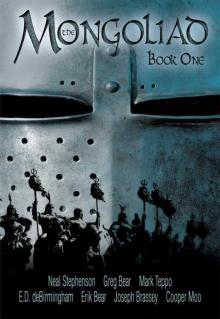 The Mongoliad: Book One tfs-1
The Mongoliad: Book One tfs-1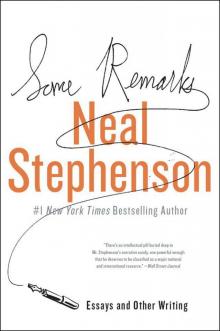 Some Remarks: Essays and Other Writing
Some Remarks: Essays and Other Writing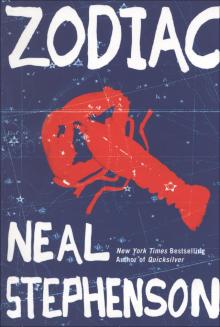 Zodiac
Zodiac Spew
Spew The Baroque Cycle: Quicksilver, the Confusion, and the System of the World
The Baroque Cycle: Quicksilver, the Confusion, and the System of the World The Diamond Age
The Diamond Age Reamde: A Novel
Reamde: A Novel In the Kingdom of Mao Bell
In the Kingdom of Mao Bell Mother Earth Mother Board
Mother Earth Mother Board Twelve Tomorrows - Visionary stories of the near future inspired by today's technologies
Twelve Tomorrows - Visionary stories of the near future inspired by today's technologies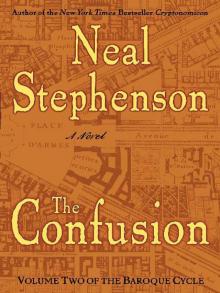 The Confusion
The Confusion The Great Simoleon Caper
The Great Simoleon Caper The Mongoliad: Book Three tfs-3
The Mongoliad: Book Three tfs-3